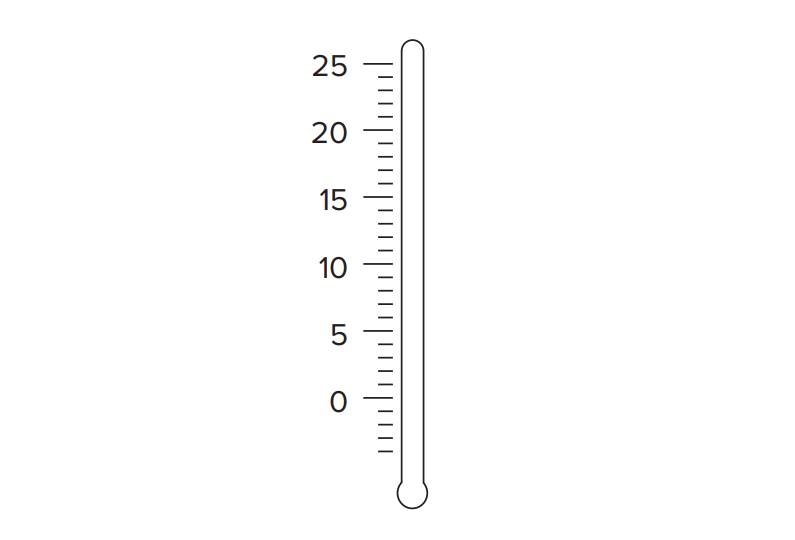



worksheets, crayons
By studying different weather forecasts, pupils should identify basic meteorological elements such as air temperature, cloudiness, air pressure and humidity, wind direction and speed.
This task focuses on the examination of air temperature. At the beginning, the teacher discusses with the pupils about the air temperature – whether it can be measured and if so how, whether it changes during the day, whether it is the same throughout the year, the same throughout the day everywhere in the world. Furthermore, the discussion is directed to the way of measuring and „reading“ the temperature of the thermometer, discussing different types of thermometer – what they know how to use them, where they are located (outside, inside) and so on. Before measuring the temperature during the day (task C), the task of the pupils will be to “read” the different values from the thermometers (task A) and vice versa, to record the different values in the thermometers (task B).

Task A shows thermometer images. Each displays a different temperature value. The task of the pupils will be to write the value displayed by each thermometer under each thermometer. After entering a numerical value for each thermometer, pupils should determine the thermometer that shows the highest temperature, and vice versa, the lowest temperature. If the pupils have difficulty reading the scale, the teacher can simplify it by displaying the thermometer value not in tens but in five.
In Task B, pupils have pictures of thermometers in which no temperature is shown. Below them is a numeric value. It will be up to the pupils to plot this value on the thermometer scale.